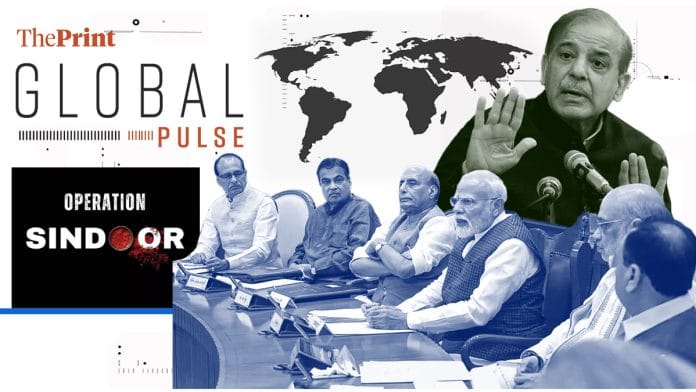New Delhi: Pakistan buys a whopping 80 percent of its arms from China, while India, which used to purchase a hefty 75 percent from Russia, now prefers to rely on its Western allies, like France and the US, reports Mujib Mashal in The New York Times.
“The United States has cultivated India as a partner in countering China, while Beijing has deepened its investment in its advocacy and patronage of Pakistan as India has grown closer to the United States,” the report reads.
Politics of the “superpowers” have been injected into the India-Pakistan conflict.
The Financial Times offers a variance of this take. A defence analyst quoted says that Trump has made it profoundly clear that he “loves both countries”.
Also seeing how the two countries stack up against each other, FT notes that India had “the second largest defence budget in Asia last year”––spending $74.4 billion––and its armed forces were “more than twice the size of Pakistan’s”.
However, the report says that “where the two sides are more equal is in nuclear weapons”.
“Both Pakistan and India hold between 160 and 170 nuclear warheads in their arsenals, according to assessments by the Arms Control Association,” write Andres Schipani, Humza Jilani and Charles Clover of FT.
After India’s strikes against Pakistan, China’s Global Times reported: “The Pakistan Air Force (PAF) has shot down another Indian fighter jet in response to overnight airstrikes carried out by India at multiple locations in Pakistan, sources from the Pakistani military said on Wednesday. This is the third Indian fighter jet that has been shot down in response to the overnight strikes, said the military sources.”
This was followed by a quick clarification from the Indian Embassy in China on X. Global Times was told to “cross-examine” their sources. The X account also said that pro-Pakistan handles are spreading baseless claims regarding the operation, in “an attempt to mislead the public”.
A PIB (Press Information Bureau) fact-check was brought in after a number of accounts from Pakistan purportedly shared old footage from Barmer as being representative of the crash of an Indian fighter jet.
The Economist assesses how the scale and nature of the India-Pakistan conflict has evolved since 2000. One major shift has been Pakistan’s “decay”.
“Once Western presidents and prime ministers had to indulge, humour, bribe and threaten Pakistan in order to ensure its half-co-operation. Now they more often ignore it,” reads the magazine in its opinion newsletter.
Meanwhile, Rick Noack and Karishma Mehrotra of The Washington Post bring testimony from a witness in J&K’s Poonch, who said that his town, which he was forced to flee, looked like “a war zone”.
“The escalation risks are already much higher than they were at any point during the 2019 crisis. It’ll be more difficult to look for off-ramps,” analyst Michael Kugalman tells The Post.
Author and journalist Sadanand Dhume writes in an opinion piece for the Wall Street Journal that dealing with Pakistan—”an unstable nation bristling with armed jihadists”—is a challenge for India.
“New Delhi must find a way to deter Pakistan-army-backed jihadist groups that have long sheltered under Pakistan’s nuclear umbrella, while factoring in Islamabad’s support from China, which calls Pakistan its “iron brother”, the piece reads.
(Edited by Mannat Chugh)






